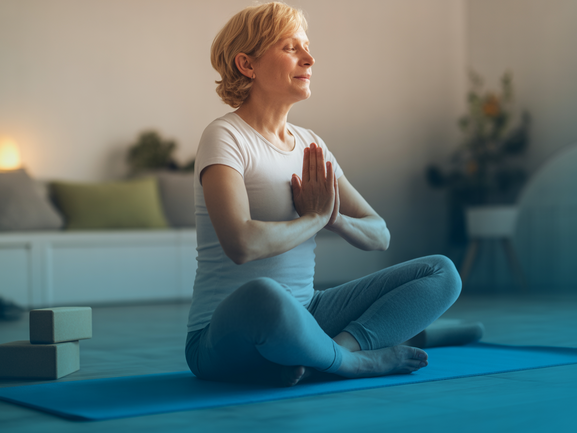Gentle Yoga Challenges for Physical Rehabilitation: Healing Through Mindful Movement
Physical rehabilitation can feel overwhelming, especially when you’re navigating limitations and working toward recovery. However, gentle yoga challenges can become powerful allies in your healing journey. These adaptable practices offer hope, progress, and a sense of empowerment during challenging times.
Unlike traditional fitness routines, yoga for physical rehabilitation focuses on mindful movement, breath awareness, and gradual progression. Moreover, these practices can be modified to accommodate various physical limitations while still providing meaningful benefits.
Understanding Adaptive Yoga in Rehabilitation
Adaptive yoga represents a revolutionary approach to healing that honors your body’s current capabilities. Furthermore, it recognizes that recovery isn’t linear and that some days will be better than others.
According to research published in the International Journal of Yoga, regular yoga practice can significantly improve pain management, flexibility, and overall quality of life during rehabilitation.
7 Gentle Yoga Challenges for Your Recovery Journey
1. The Breath Connection Challenge
Start with mindful breathing exercises that can be performed from any position. This challenge focuses on establishing a deep connection between breath and movement, which forms the foundation of all yoga practices.
- Practice 4-7-8 breathing technique
- Explore belly breathing while lying down
- Try alternate nostril breathing for balance
2. Gentle Spinal Mobility Challenge
Spinal health is crucial for overall recovery. These adaptive yoga poses can be performed seated or lying down, making them accessible regardless of your current mobility level.
- Seated spinal twists with support
- Cat-cow movements adapted for your position
- Gentle neck rolls and shoulder shrugs
3. Supported Strength Building Challenge
Building strength doesn’t require intense movements. Instead, this challenge focuses on isometric holds and supported poses that gradually build endurance.
- Wall-supported warrior poses
- Chair-assisted standing poses
- Modified plank variations
4. Balance and Stability Challenge
Improving balance is essential for preventing future injuries. These exercises can be modified with props and support as needed.
- Single-leg stands with wall support
- Heel-to-toe walking
- Seated balance challenges
5. Flexibility and Range of Motion Challenge
Gentle stretching helps maintain and improve flexibility while respecting your body’s current limitations.
- Supported forward folds
- Gentle hip openers with props
- Assisted hamstring stretches
6. Mindfulness and Pain Management Challenge
This challenge combines healing yoga practice with meditation techniques to help manage discomfort and promote mental well-being.
- Body scan meditations
- Gentle restorative poses
- Visualization techniques for healing
7. Progressive Movement Challenge
As you progress, this challenge introduces slightly more complex movements while maintaining safety and adaptability.
- Modified sun salutations
- Gentle flow sequences
- Coordinated breath and movement patterns
Scientific Benefits of Yoga in Physical Rehabilitation
Research consistently shows that yoga poses for injury recovery provide numerous benefits:
- Pain Reduction: Studies indicate up to 40% reduction in chronic pain symptoms
- Improved Flexibility: Gentle stretching increases range of motion safely
- Better Sleep Quality: Relaxation techniques promote restorative sleep
- Enhanced Mood: Mindfulness practices reduce anxiety and depression
- Faster Recovery: Improved circulation aids in healing processes
Essential Safety Guidelines for Rehabilitation Yoga
Safety should always be your top priority when practicing modified yoga for limited mobility. Here are crucial guidelines to follow:
- Always consult with your healthcare provider before starting
- Listen to your body and respect its limits
- Use props and modifications without hesitation
- Never push through sharp or sudden pain
- Work with qualified instructors experienced in adaptive yoga
Remember, the goal isn’t perfection but progress. Each small step forward is a victory worth celebrating.
Creating Your Personal Practice
Developing a consistent practice requires patience and self-compassion. Start with just 10-15 minutes daily, focusing on what feels good rather than what looks impressive.
Consider exploring guided sessions designed specifically for your journey. Professional guidance can ensure you’re practicing safely while maximizing benefits.
Additionally, tracking your progress through a journal can help you recognize improvements that might otherwise go unnoticed. Document how you feel before and after each session, noting any changes in pain levels, mood, or mobility.

